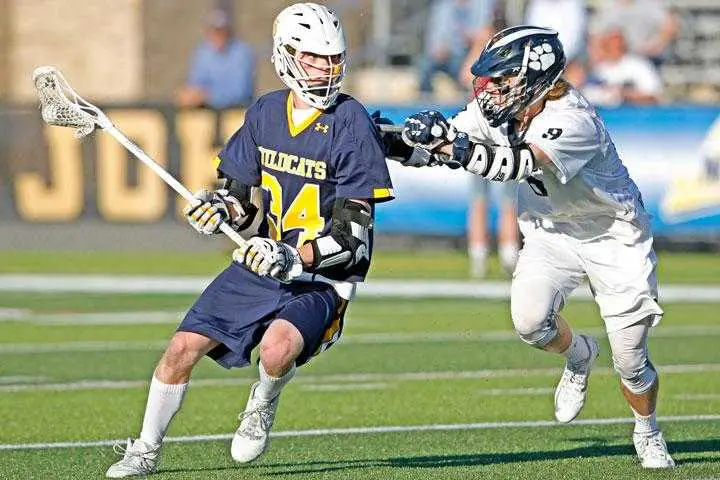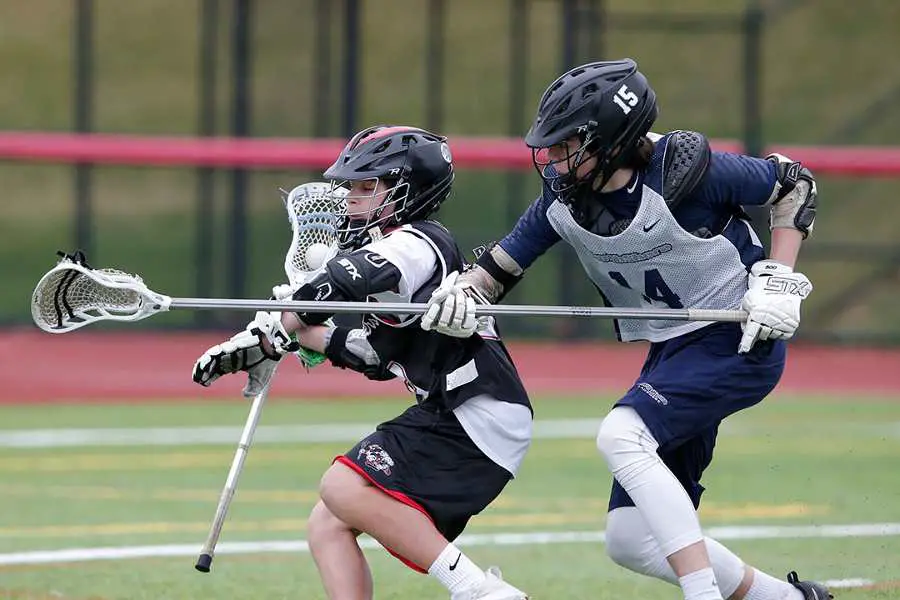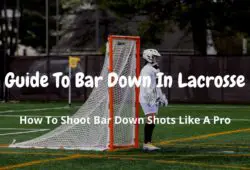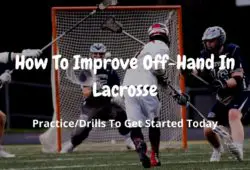In defense, the most effective and common type of defense technique is checking, which basically means to use the stick of a defender to strike the crosse or butt end of the offensive player’s stick. There are two primary goals when performing checks: one is to reduce an offensive player’s stick handling ability; two is to knock the ball out from the opponent’s stick.
Especially for beginners, it’s very imperative to understand the rules on checking, the types of checking and how to perform checking effectively and correctly. Without a good understanding of how to check in a correct way, players are very likely subject to getting penalties and even game bans.
Hence, this is a very important post to digest and understand in order to make sure you will become a great and commanding defender player who can accurately execute checking.
Without further ado, let’s begin.
What are two different types of checking in lacrosse?
There are two different types of checks: stick and body checks. Stick checking refers to a defender using the stick to lift or poke the opponent’s stick whereas body checking refers to a defender using his body to make direct contact with the opponent in an attempt to regain possession of the ball.
Note, body checking is not legal in women’s lacrosse as well as men’s U12. Rules on stick checking vary based on your level and age, in particular, U12 and below have much stricter rules on stick checking. Make sure you ask your coach and get familiar with the rules before the season begins.
Next, let’s dive into the sections respectively to understand how they work.
Read also: What’s LSM in lacrosse?

Body check
Rules:
Body checks are also referred to as “shoulder to shoulder” contact. It’s a legal body contact in men’s lacrosse as long as it’s below the shoulders and above the waist of the target. In other words, body checking can’t target the opponent’s head or legs and it can only be done against an opponent who is in possession of the ball or an opponent who is within three yards of the ball.
In addition, when doing a body check, make sure both of your hands remain in contact with your stick and you can’t do body checking on the opponent from behind.
There might be some one-off rules based on your local tournament, so be sure to do the necessary research in regards to the specifics.
When To Use Body Checking:
Although body checking can come across as aggressive and disruptive, they are effective and useful on the crease as a straightforward way to stop dodges, block passes and shots. Especially when the opponent is near the goal, using body checking could be proven to be a direct and effective way to impact their offensive play.
Hence, you shouldn’t be doing body checks too frequently. If the defender doesn’t represent himself as an immediate threat, you should refrain from doing body checking to avoid potential penalties.
Remember lacrosse puts more emphasis on techniques and agility, your defense shouldn’t be driven by simply creating physical contact.
Important Techniques
- Dominant foot forward with knees bent and shoulders are squared against the opponent
- As you are about to make contact with the opponent, bend your knees and drop your shoulders; once you are in contact with the opponent, push him off of the direction with power generated from your bending position
- Remember only your gloves can make contact with the opponent at the same time you have to make sure your hands are no more than 4-6 inches apart
Watch this great tutorial video that walks through body checking

Stick Checking
Rules
Stick checking is a more common and frequent type of checking you see elite players perform. Unlike body checks, you want to minimize contact to only stick to stick. As soon as your stick hits the opponent, a foul is very likely.
Different types of stick checking
- Lift Check
As the name suggests, to perform a lift check, you are trying to lift the opponent’s bottom hand using your stick. It often results in your opponent dropping the ball and creating a ground ball opportunity. Long stick middie is prone to this type of checking as their stick has better reachability.
- Slap Check
This is the most widely used and effective check by defenders. You will use your stick to try to slap at an opponent’s stick. Make sure you are only hitting the opponent’s stick or his gloves but not making contact with the opponent.
- Poke Check
By poking, you are aiming at the opponent’s hand or the bottom part of the shaft using the head part of your stick so that he drops the ball.
Since you are actually using the head part of your stick, you can perform a poke check even when you are a little far from the opponent.
- Trail Check
If unfortunately, your opponent zipped past you as a last-ditch effect, you can resort to the last type of checking, trail check by knocking the opponent’s lacrosse head from behind. This can be easily done when the opponent is hanging his stick.
However, this check involves a lot of risks as well since you have a high chance of hitting the opponent’s helmet, which will be called a foul.
To condense all the key points into one video, watch this video below to solidify your knowledge:
How to practice checking in lacrosse
Now after going through all the knowledge and rules, you should remember, it’s time to put it into real practice. Remembered what I said at the beginning of the post, which is the no.1 goal of checking is to wear down your opponent as it’s much easier to steal the ball away from your opponent after he/she starts to lost composure and strength.
Another thing is to focus on separating your shoulders and the rest of the body from your arms when doing checks.
Watch this great stick practice video that teaches you two very effective defense drills
Conclusion
Congratulations! Now you have learned everything you need to know about checking in lacrosse. Since checking is very likely to draw a foul, you want to practice checking correctly and effectively so that you can become a dominant defender.
Don’t get frustrated if you don’t get it right away as checking requires practice and patience. If you aren’t sure whether what you are doing is right or not, check in with your coach and also feel free to leave me a comment. I read all the comments and will provide the best answers possible!
Additionally, don’t forget to get a great pair of defense head and shaft.




